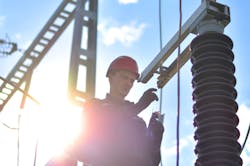You already have OSHA, so why also follow NFPA 70E? And if NFPA 70E can actually make you safer, why don’t the OSHA regulations include it?
The OSHA regulations govern the employer. Their main thrust is to ensure the employer has a safety program that meets specific standards of performance and the employer properly trains the employees to conform with that program.
NFPA 70E helps employers and employees provide a practical safe working area relative to the hazards arising from the use of electricity.
So OSHA and NFPA 70E work together. Not only that, key OSHA personnel have been involved in the development of NFPA 70E for quite some time. They have worked directly with electrical industry leaders, including executives of electrical service firms.
It’s not an either/or choice. The employer is legally obligated to conform to OSHA regulations. But is the employer obligated to use NFPA 70E? In a practical sense, yes. When the employer and employees utilize NFPA 70E, they reduce hazards not only to employees but to the companies they work for. The financial, operational, and emotional impact on a firm when an employee suffers an arc blast or electrocution can be severe.
NFPA 70E is a practical guide. But don’t forget the value of a safety culture. This must be nurtured from the top down and from the bottom up. When everyone is thinking of how to identify hazards and protect workers from them, the way people use NFPA 70E will be far more effective than if they are trying to see what they can get by with or counting on luck (which tends to run out sooner or later).
About the Author

Mark Lamendola
Mark is an expert in maintenance management, having racked up an impressive track record during his time working in the field. He also has extensive knowledge of, and practical expertise with, the National Electrical Code (NEC). Through his consulting business, he provides articles and training materials on electrical topics, specializing in making difficult subjects easy to understand and focusing on the practical aspects of electrical work.
Prior to starting his own business, Mark served as the Technical Editor on EC&M for six years, worked three years in nuclear maintenance, six years as a contract project engineer/project manager, three years as a systems engineer, and three years in plant maintenance management.
Mark earned an AAS degree from Rock Valley College, a BSEET from Columbia Pacific University, and an MBA from Lake Erie College. He’s also completed several related certifications over the years and even was formerly licensed as a Master Electrician. He is a Senior Member of the IEEE and past Chairman of the Kansas City Chapters of both the IEEE and the IEEE Computer Society. Mark also served as the program director for, a board member of, and webmaster of, the Midwest Chapter of the 7x24 Exchange. He has also held memberships with the following organizations: NETA, NFPA, International Association of Webmasters, and Institute of Certified Professional Managers.
